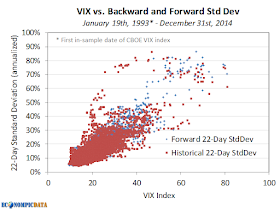The adviser placed approximately $900,000 of the investor's savings, which his lawyer said was the vast majority, in products managed by two so-called ETF strategists. More than half went into an F-Squared's AlphaSector Allocator Select, and the remainder went into Good Harbor Financial's U.S. Tactical Core product.A quick look at the insanely good returns of the black box Good Harbor strategy prior to their fund launch (this was for Good Harbor's non-wrap and wrap accounts).
BACKGROUND
At roughly that time, a salesman at my former firm would rave about the returns of the strategy / drool at the commissions their quickly expanding distribution team was capturing (see fund flows below). I remember him sharing that flows were in the billion plus per quarter range (I can't verify that figure, but given the fund is only a fraction of firm's AUM that seems plausible).
To no surprise of anyone that knows me, I tried to figure out what they were actually doing, using the following Good Harbor objectives as my starting point.
- Long-only stock exposure with reduced beta
- Seeks to outperform the Standard & Poor's 500 Total Return Index by allocating investments tactically across various asset classes
- Designed to align with US stocks during sustained bull markets
- Designed to move defensively to US Treasuries during sustained bear markets
- Use of leverage
Through a bit of trial and error, I backed into results that looked awfully similar using the following simplistic rules:
- 3 and 6 month rolling returns (i.e. 2 paths)
- If S&P 500 > Long Treasuries, allocate to the S&P 500
- If S&P 500 < Long Treasuries, allocate to the Long Treasuries
- 1.2x leverage
I hadn't thought about the above model (or Good Harbor for that measure) in more than 2 years, but when I came across the article I thought it would be interesting to dust off the model and compare the results of Good Harbor's strategy vs. my own (in the below, returns past January 2013 are the institutional fund).
The results are pretty brutal; either their model's signal(s) were tied to momentum and that relationship broke down or... well, they simply changed how they followed the model (perhaps behavioral issues tied to managing billions vs millions). Either way, returns since January 2013 were 65% for the EconomPic replication model, 55% for the S&P 500, and -3% for the Good Harbor strategy.
As for the investors that piled in billions of dollars, this is seemingly yet another example of performance chasing. In this specific case by an advisor who should have known better than to chase returns with the majority of a client's portfolio (concentration that should not be done irrespective of past performance or future performance expectations).
What's interesting to me is that performance chasing is especially prevalent for investments that are too good to be true, either with the potential of a new technology (biopharma comes to mind), the superiority of an investment manager (the case of Marketfield comes to mind), or (in this case) in the form of a black box that always beats the market (hedge funds also come to mind).
In this specific case, you add in the 5.75% load of the A-share and this may be a situation where past performance is not the only issue:
The claim said that Wells Fargo earned about $19,000 in fees for recommending the products, eroding potential capital gains. According to a copy of the claim reviewed by InvestmentNews that created "a conflict in recommending such high commission investments.”
Source: S&P, Barclays
















